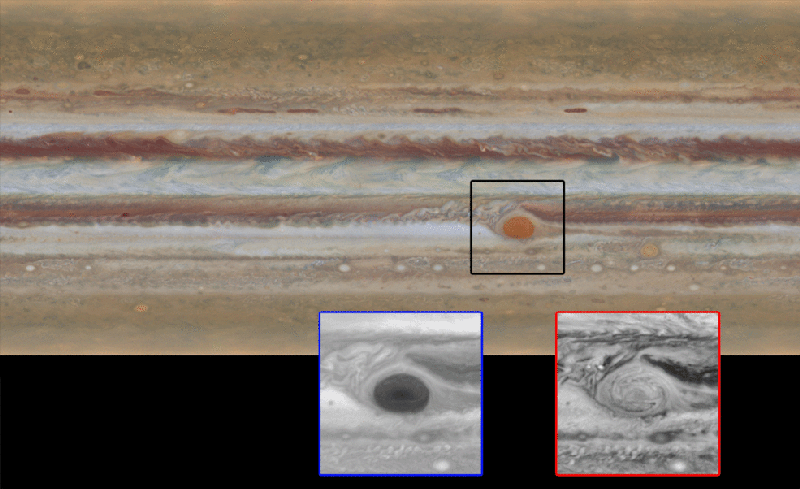
Using data acquired by the Hubble Space Telescope, scientists at NASA have updated their maps of Jupiter. The new images—shown in 4K ultra high definition—reveal changes to the Great Red Spot and rare waves not seen since the Voyager 2 mission.
NASA updates its maps of Jupiter each year, but this year’s project proved to be particularly fascinating.
The two new maps were captured by Hubble’s high-performance Wide Field Camera 3 and analyzed by planetary scientists at NASA’s Goddard Space Flight Center in Greenbelt, Maryland. The maps, which show back-to-back rotations of the planet, make it possible to study a broad range of features, including winds, clouds, storms, and atmospheric chemistry.

Close-ups of the Great Red Spot reveals a unique filamentary feature not previously seen. (Image and caption credit: NASA/ESA/Goddard/UCBerkeley/JPL-Caltech/STScI)
Analysis of the Great Red Spot shows that it’s getting smaller and more circular. The spot, which is now more orange than red, measures 150 miles (240 km) along its long axis. The NASA scientists noticed an unusual wispy filament within the spot, which has never been seen before. This filamentary streamer is being tossed around by winds reaching upwards of 330 mph (150 meters/second).

This false-color close-up of Jupiter shows cyclones (arrows) and the elusive wave (vertical lines). (Image and caption credits: NASA/ESA/Goddard/UCBerkeley/JPL-Caltech/STScI)
The scientists also noticed a rare wave just north of the planet’s equator. The phenomenon was first spotted by the Voyager 2 spacecraft during its historic flyby in 1979, but hasn’t been seen since. The wave is situated in an area replete with cyclones and anticylones. Similar waves, called baroclinic waves, have been seen in Earth’s atmosphere where cyclones are forming.
[ NASA ]